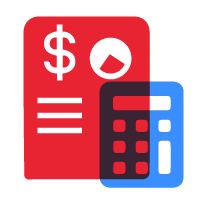In the modern era of technological innovation, data serves as the cornerstone driving the advancement of artificial intelligence (AI). AI systems depend on extensive volumes of precisely labeled data to learn and function effectively. From computer vision to natural language processing and beyond, data annotation plays a critical role in transforming raw information into actionable insights for intelligent algorithms.
What is Data Annotation?
Data annotation is the process of labeling and categorizing data. It plays a crucial role in enabling AI models to comprehend and extract meaningful insights from diverse datasets. By providing labels, annotations empower algorithms to recognize patterns, understand context, and make accurate predictions.
Data annotation is an indispensable process in the development of AI systems, enabling them to leverage labeled data to perform complex tasks effectively. With the right annotation methods, addressing challenges, incorporating domain expertise, and considering ethical implications, data annotation unlocks the true potential of AI.
As AI continues to evolve and shape various industries, data annotation will remain a critical component in building robust, accurate, and responsible AI models that benefit society as a whole.
Why Does It Matter?
Data annotation involves the process of labeling and annotating data to make it understandable and usable for artificial intelligence (AI) and machine learning (ML) algorithms. It plays a pivotal role in training models, enhancing accuracy, and enabling groundbreaking applications in various domains. By providing labeled examples, it enables AI models to learn from previous experiences and generalize their knowledge to new, unseen data.
This process is instrumental in developing intelligent systems capable of analyzing vast amounts of information and making accurate decisions. Data annotation also ensures that AI models can interpret and process information accurately, reducing errors and increasing precision in their predictions and outputs. The reliability and trustworthiness of AI applications are greatly enhanced through effective annotation practices.

What is the Difference Between Data Annotation and Data Labeling?
While both data annotation and data labeling are related processes, they have slight differences in their definitions and implications. Data annotation refers to the process of adding metadata or annotations to raw data to provide context, meaning, and structure. It involves labeling, tagging, or enriching the data with additional information, such as attributes, categories, or relationships. It thus aims to make the data understandable and usable for ML algorithms.
Data labeling, on the other hand, is a specific aspect of data annotation. It involves assigning specific labels or tags to data instances based on predetermined categories or classes. Data labeling focuses on categorizing data points or samples, often using predefined labels or classes that represent specific features or attributes of the data. For example, data labeling entails labeling images as “cat” or “dog” based on their content, or categorizing text sentiment as “positive,” “negative,” or “neutral.”
What Role Does Data Annotation Play?
Data annotation is critical for building domain-specific AI applications. Each industry or field has its unique requirements and context, necessitating specific annotations tailored to those needs. In autonomous driving, for instance, data annotation allows AI models to recognize and understand road signs, pedestrians, and other vehicles, ensuring the safety and efficiency of self-driving vehicles. The ability to annotate data with domain-specific knowledge empowers AI models to make informed decisions and solve complex challenges.
Moreover, data annotation also enables transfer learning, a powerful technique in AI model development. With annotated data, pre-existing models can be fine-tuned or adapted to new tasks or domains. This approach significantly reduces the need for large amounts of labeled data for each specific application.
Types of Data Annotation
Sematic Annotation
Semantic annotation is a type involves assigning meaningful labels or tags to data elements, enabling machines to understand the underlying semantic or contextual information. It focuses on capturing the meaning and significance of data rather than just its surface characteristics.
Image Annotation
In the field of computer vision, image annotation is used to label objects or regions within an image. This includes bounding boxes, polygonal outlines, or pixel-level segmentation to identify objects, people, or specific attributes within the image.
Text Annotation
Text annotation involves labeling textual data, such as documents, articles, or social media posts. It can include tasks like named entity recognition (identifying names, locations, organizations), sentiment analysis (determining positive, negative, or neutral sentiment), or part-of-speech tagging (identifying grammatical categories of words).
Audio Annotation
Audio annotation is employed in speech recognition, audio transcription, or audio classification tasks. It includes transcribing spoken words, identifying speaker turns, labeling emotions or sentiment in speech, or marking specific events within an audio recording.
Video Annotation
Video annotation involves labeling objects or actions within a video sequence. It can include tracking objects, identifying gestures or facial expressions, annotating events or activities, or categorizing video content.
Entity Annotation
Entity annotation focuses on identifying and labeling named entities within textual data. Named entities are specific words or phrases that refer to individuals, organizations, locations, dates, quantities, or other named entities of significance within a given context.

Advantages of Data Annotation
1. Enhanced Machine Learning Model Performance
One of the primary advantages of annotating data lies in its ability to significantly improve the performance of machine learning models. By providing labeled examples, it enables models to learn patterns, relationships, and features within the data. This understanding, in turn, allows models to make more accurate predictions, classifications, and decisions.
2. Increased Accuracy and Reliability
Data annotation plays a crucial role in enhancing the accuracy and reliability of AI applications. Precise and detailed annotations ensure that AI models correctly interpret and understand the data. This increased accuracy enables AI applications to generate reliable insights, support informed decision-making, and drive meaningful outcomes across various domains.
3. Improved Efficiency and Cost-effectiveness
Annotation offers a significant advantage in terms of efficiency and cost-effectiveness. Annotating large datasets manually can be a time-consuming and resource-intensive process. However, once a dataset is annotated, it can be leveraged for training multiple models and applications, reducing the need for redundant annotations. Furthermore, by utilizing pre-annotated datasets or adopting transfer learning techniques, developers can save time and effort, resulting in faster model development cycles and cost savings.
4. Customization for Specific Applications
Data annotation enables customization for specific applications and domains, accommodating unique requirements and contextual knowledge. By incorporating domain-specific labels, attributes, or features, it ensures that AI models can understand and interpret data within the specific context. Customized annotations empower models to address industry-specific challenges, leading to more accurate and tailored AI solutions.
5. Facilitation of Ethical and Fair AI
Data annotation plays a pivotal role in promoting ethical and fair AI systems. By carefully annotating data and considering biases and fairness criteria, annotation processes can mitigate the risk of perpetuating or amplifying existing biases within the data. Through proper annotation, AI models can be trained to recognize and address societal biases, enabling the development of unbiased and inclusive AI applications.
The Future of Data Annotation
Data annotation holds immense potential for transformative advancements in the field of artificial intelligence. Automation, AI-assisted annotation, and active learning techniques will streamline the annotation process, making it faster, more accurate, and cost-effective.
Here are a few takeaways regarding data annotation’s future:
- The rise of multimodal data will necessitate the annotation of multiple modalities simultaneously, enabling a deeper understanding of complex data.
- Privacy-preserving techniques will be integrated into annotation workflows to ensure the secure handling of sensitive information.
- Continuous learning models and incremental annotation will allow AI systems to adapt and improve over time.
- Quality assurance and standardization will be prioritized to ensure reliable and consistent annotations, while domain-specific expertise will become increasingly valuable.
With these advancements, data annotation will play a critical role in fueling the development of sophisticated AI models and applications that can revolutionize industries and drive innovation in the future.
Data Annotation for E-commerce
Annotation plays a crucial role in the e-commerce industry, driving personalized shopping experiences, improved product recommendations, and enhanced customer engagement. By annotating product data with attributes such as brand, category, color, size, and price, e-commerce platforms can offer efficient search functionalities and filter options, enabling customers to find products that match their preferences quickly.
Additionally, annotating product images with object detection and classification helps in visual search, allowing users to find visually similar items. Sentiment annotation of customer reviews helps in sentiment analysis, enabling businesses to understand customer feedback and make informed decisions. Moreover, annotating data facilitates the training of recommendation systems, enabling e-commerce platforms to offer personalized product recommendations based on user behavior and preferences.
Overall, data annotation empowers the e-commerce industry to deliver tailored and relevant experiences, driving customer satisfaction and business growth.
Data Annotation for AI and Robotics
Annotation plays a critical role in developing AI and robotics systems. By annotating sensor data such as images, videos, and sensor readings, data annotation enables AI models to understand and interpret their surroundings accurately. Object detection and segmentation annotations help robotic systems perceive and interact with objects in their environment, enhancing their ability to navigate and manipulate objects effectively. Annotation of human poses and gestures aids in developing robotics systems that can understand and respond to human interactions.
Additionally, data annotation supports the training of AI models for autonomous decision-making, enabling robots to make informed choices based on annotated data. With this, AI and robotics systems become more intelligent, capable, and responsive, thereby opening up possibilities for applications in fields such as manufacturing, healthcare, and transportation.
Data Annotation for Medical Imaging Technologies
Data annotation provides significant assistance in advancing medical imaging technologies and revolutionizing healthcare. By annotating medical images with labels for various structures, organs, and abnormalities; data annotation enables the development of accurate and reliable computer-aided diagnosis (CAD) systems. Annotation of radiology images (such as X-rays, CT scans, and MRIs) helps detect and diagnose diseases such as cancer, fractures, and neurological disorders.
Additionally, annotating data allows for the training of deep learning algorithms that can segment and analyze medical images, providing detailed insights for treatment planning and surgical interventions. With this, medical imaging technologies can achieve higher levels of precision, speed up diagnosis, and improve patient outcomes, making it a crucial component in the ongoing advancements of modern healthcare.

Quality Data Annotation Through Outsource-Philippines’ Data Annotation Services
Are you ready to unlock the true potential of your data? Harness the power of accurate and reliable insights with Outsource-Philippines’ data annotation services. Our team of experts is dedicated to providing top-notch annotation solutions tailored to your specific needs, whether it’s for AI model training, image recognition, sentiment analysis, or any other data-driven application. With our meticulous attention to detail, advanced annotation techniques, and commitment to data quality, we ensure that your annotated data sets are of the highest standards.
Don’t let valuable data go untapped. Contact us today to discuss how our data annotation services can drive your business forward and unleash the full potential of your data-driven endeavors. Together, let’s transform your data into actionable intelligence.












